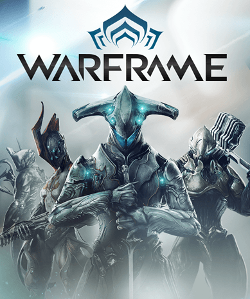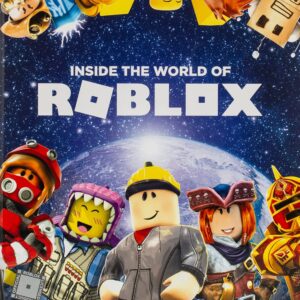Beyond the Cosmos: How Nintendo’s Super Mario Galaxy Announcements Hint at a Broader Strategy
Popular Now
 Fall Guys
Fall Guys
 R.E.P.O
R.E.P.O
 God of War Ragnarök
God of War Ragnarök
 Schedule I
Schedule I
 Garena Free Fire: Kalahari
Garena Free Fire: Kalahari
 Text to Speech Voice
Text to Speech Voice
 Toca Boca World
Toca Boca World
 Gacha Club
Gacha Club
 Sonic the Hedgehog™ Classic
Sonic the Hedgehog™ Classic
 Free Fire Max
Free Fire Max
 In a series of announcements that have sent shockwaves through the gaming community, Nintendo has turned the spotlight squarely on the Super Mario Galaxy universe. During a recent Nintendo Direct presentation, the company unveiled not one, but two major projects tied to the beloved Wii classic. First, the long-awaited re-release of both Super Mario Galaxy and its critically acclaimed sequel, Super Mario Galaxy 2, for the Nintendo Switch. Second, a new animated film, titled The Super Mario Galaxy Movie, a sequel to the 2023 blockbuster. These back-to-back announcements, while exciting on their own, seem to be part of a much larger, more strategic plan by Nintendo to prepare its audience for what’s next. This coordinated push suggests that these announcements are not just a celebration of Mario’s 40th anniversary, but a stepping stone toward a new era for the franchise and, potentially, the upcoming Nintendo Switch 2.
In a series of announcements that have sent shockwaves through the gaming community, Nintendo has turned the spotlight squarely on the Super Mario Galaxy universe. During a recent Nintendo Direct presentation, the company unveiled not one, but two major projects tied to the beloved Wii classic. First, the long-awaited re-release of both Super Mario Galaxy and its critically acclaimed sequel, Super Mario Galaxy 2, for the Nintendo Switch. Second, a new animated film, titled The Super Mario Galaxy Movie, a sequel to the 2023 blockbuster. These back-to-back announcements, while exciting on their own, seem to be part of a much larger, more strategic plan by Nintendo to prepare its audience for what’s next. This coordinated push suggests that these announcements are not just a celebration of Mario’s 40th anniversary, but a stepping stone toward a new era for the franchise and, potentially, the upcoming Nintendo Switch 2.
The timing of these reveals is no coincidence. The gaming industry is buzzing with speculation about Nintendo’s next-generation hardware. The re-release of Galaxy 1 and 2, a move that rectifies the glaring omission of the sequel from the Super Mario 3D All-Stars collection, provides a powerful and immediate reason for players to engage with the series’ past. This dual-pack, available physically and digitally, is a clear olive branch to fans who have been clamoring for Galaxy 2 on modern hardware. It offers a new, definitive way to experience these masterpieces, complete with enhanced visuals up to 4K resolution on the new hardware and a revamped UI. This is a brilliant strategic move. By bringing back two of the most popular and influential games in the Mario catalog, Nintendo is not just capitalizing on nostalgia; it’s creating a new generation of fans for the Galaxy sub-series just as the cinematic universe expands.
 The Synergy Between Gaming and Film: A New Model for Nintendo
The Synergy Between Gaming and Film: A New Model for Nintendo
The announcement of The Super Mario Galaxy Movie is perhaps the most significant piece of this puzzle. The first film, The Super Mario Bros. Movie, was a commercial juggernaut, shattering box office records and proving that Nintendo’s iconic characters have massive appeal beyond the gaming console. The sequel, drawing from the cosmic narrative of the Galaxy games, is a direct tie-in to the re-released titles. This creates a powerful feedback loop: fans of the movie will be drawn to the games, and players re-experiencing the games will be more invested in the film’s story and characters. This is a masterful cross-media marketing strategy, building on the success of Illumination’s animation and Nintendo’s IP. The new film’s trailer, featuring the charming star character Luma and hinting at an intergalactic adventure, is designed to generate hype and create an undeniable connection between the two products. The inclusion of new content in Rosalina’s storybook within the re-released games, which is believed to tie into the movie’s deeper lore, further solidifies this synergy.
Nintendo is not just selling games and movies; it is cultivating a sprawling media ecosystem. This is a major departure from the company’s more cautious approach in the past. It’s a signal that they have learned from the success of their first film and are ready to fully leverage their intellectual properties across multiple platforms. This integrated strategy serves to keep the Super Mario franchise at the forefront of popular culture, ensuring its relevance in an increasingly competitive entertainment landscape. The success of this model could pave the way for similar projects, such as a Metroid film or a The Legend of Zelda series, further expanding Nintendo’s media footprint and driving long-term brand loyalty.
 Super Mario Galaxy and the Dawn of a New Console
Super Mario Galaxy and the Dawn of a New Console
So, what does all of this mean for the future, particularly for the rumored Nintendo Switch 2? The re-release of two of the most critically acclaimed 3D platformers in history, with enhancements to support new hardware, is a strong indicator of what is to come. The games are not just being ported; they are being prepared for a new machine. The promise of 4K resolution in docked mode for the Switch 2 version is a clear message to consumers: your classic games will look and play better on our new hardware. This is a compelling selling point and a powerful part of a potential launch strategy. It provides a familiar, beloved library of games that looks and feels new, while Nintendo works on a flagship, first-party title to lead the charge.
The launch of a new console often presents a challenge for developers. By re-releasing these games and tying them to a major film, Nintendo ensures a steady stream of high-quality content while its studios focus on creating a true system-seller. This is a common strategy in the gaming industry—using remasters and re-releases to fill out a launch lineup—but Nintendo’s approach is uniquely holistic. They are creating a media event around the games, making the purchase of the re-releases an essential part of the Super Mario fandom experience. The dual release of a physical bundle and separate digital editions also caters to different consumer habits, ensuring maximum market penetration. This also gives players a great reason to pick up a new Nintendo Switch 2 if they don’t already own the original, as they can benefit from the enhanced features. The inclusion of new amiibo figures and a physical version of Rosalina’s storybook further builds on the collectibility of the franchise, turning a simple game release into a multi-faceted event.
 In conclusion, the back-to-back announcements surrounding Super Mario Galaxy are far from a simple trip down memory lane. They are a meticulously crafted strategy designed to achieve multiple goals: celebrate a key anniversary, build a cohesive cross-media brand, and prime the market for the next generation of Nintendo hardware. By tying the release of the games directly to a major cinematic event, Nintendo is not just selling products; it’s selling an experience. This is a significant moment for the company, one that demonstrates a new level of confidence and ambition in its ability to dominate the entertainment landscape. For fans, it’s a golden age of Super Mario content, and it’s only just beginning.
In conclusion, the back-to-back announcements surrounding Super Mario Galaxy are far from a simple trip down memory lane. They are a meticulously crafted strategy designed to achieve multiple goals: celebrate a key anniversary, build a cohesive cross-media brand, and prime the market for the next generation of Nintendo hardware. By tying the release of the games directly to a major cinematic event, Nintendo is not just selling products; it’s selling an experience. This is a significant moment for the company, one that demonstrates a new level of confidence and ambition in its ability to dominate the entertainment landscape. For fans, it’s a golden age of Super Mario content, and it’s only just beginning.









